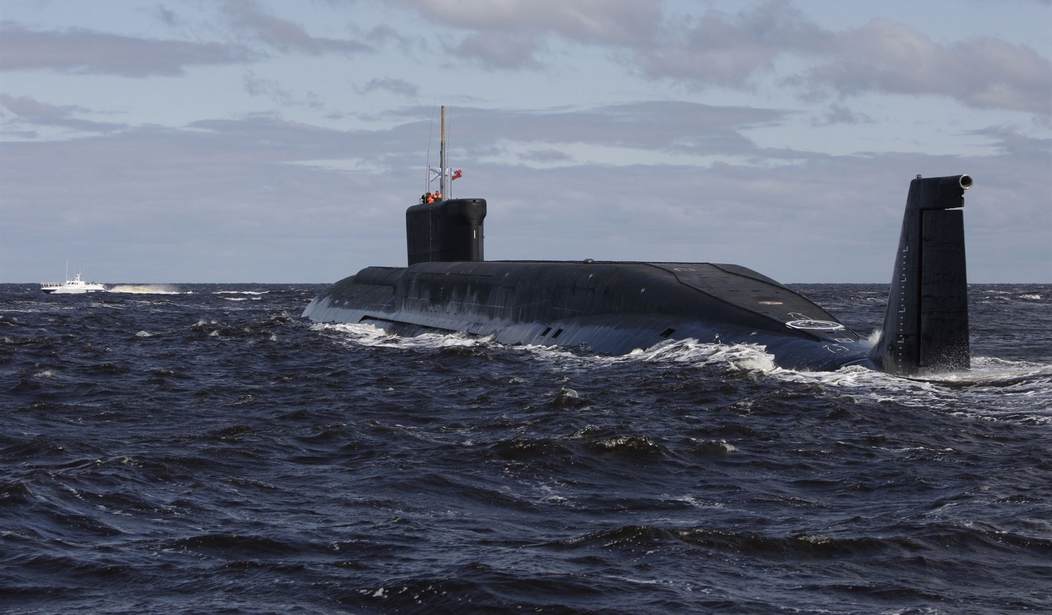Anytime anything occurs with China’s military, it is shrouded in mystery. Denial, lies, deceit, and misdirection are the CCP’s standard operating procedure, especially if it’s an accident that would point to them being at fault.
If you have ever watched the movie “Red October,” there are eerie similarities between that and this story. No, there doesn’t appear to be a defection, as in the movie, but the fact that a submarine is involved as well as the typical deception by Chinese officials draws parallels to that storyline.
During the past week, reports began to surface that a Chinese nuclear submarine became ensnared in one of its own traps in the Yellow Sea. On board, all 55 crewmen, including 22 officers, were deceased. The trap, or snare, is known as a chain and anchor obstacle and was designed to ensnare U.S., British, and other allied submarines.
It is believed that the deaths were caused by hypoxia due to an oxygen supply system failure that occurred after the sub became ensnared. The Daily Mail reported the incident, quoting classified British intelligence documents:
Intelligence reports that on 21st of August there was an onboard accident whilst carrying out a mission in the Yellow Sea. Incident happened at 08.12 local resulting in the death of 55 crew members: 22 officers, 7 officer cadets, 9 petty officers, 17 sailors. The dead include the captain Colonel Xue Yong-Peng.
Our understanding is death caused by hypoxia due to a system fault on the submarine. The submarine hit a chain and anchor obstacle used by the Chinese Navy to trap US and allied submarines. This resulted in systems failures that took six hours to repair and surface the vessel. The onboard oxygen system poisoned the crew after a catastrophic failure.
Let the espionage begin. In an interview with Newsweek, the director of the U.S. Naval War College Institute for Future Warfare Studies, Sam Tangredi, said, “I don’t know if the incident occurred. The Chinese Communist Party and People’s Liberation Army Navy are not willing to admit mistakes. However, Taiwan authorities have stated that they have no evidence that the incident did occur, and they would not have an incentive to hide it.”
Tangredi related the CCP denial to that of Vladimir Putin concerning the Russian Kursk submarine disaster that occurred in 2000. In case you don’t remember that incident, it cost 118 crew members their lives. The sub was on an exercise in the Barents Sea when one of its torpedoes exploded during a test launch. That blast caused other torpedoes to detonate, which sent the disabled sub to the sea floor.
The Kremlin initially denied that the incident had occurred and refused assistance from both Norway and Britain until it was too late to save any of the survivors onboard. The Kursk incident is still the largest loss of life disaster in submarine history.
Tangredi said, “It is presumed that Russia did not want anyone to have access to the submarine lest they get classified information. My belief is that the CCP would be even worse, even more secretive even if it would cost sailor’s lives.”
“Admitting the accident, if it occurred, would have been an embarrassment within their CCP hierarchy, and for both propaganda and counterintelligence purposes they certainly would not ask for assistance from U.S or Japan,” explained Tangredi. “How could they portray U.S. or Japan as potential military opponents if they helped rescue Chinese sailors?”
“Theirs is a brutal system as far as accidents are concerned; all are afraid to accept responsibility,” said Tangredi. He further elucidated:
Submarine operations are inherently dangerous. The U.S. Navy, U.K., and allies have learned to minimize the dangers over decades of operations. The PLA Navy does not have that long experience.
Tangredi said that in addition, China’s ambitious naval expansion plans may have been a factor, as the communist nation possibly placed safety concerns as secondary to rapid growth. He also pointed out several other issues that need to be considered, such as the location of the traps and the type of deterrent that was used. And he cast doubt on the Daily Mail’s assertion that it was a nuclear submarine that was involved, saying that such submarines generally operate in the open ocean rather than the shallows, where the recent disaster allegedly occurred.
Newsweek also interviewed John Blaxland, who works at the Australian National University as a professor of International Security and Intelligence Studies. He told them that reports “remain inconclusive,” yet “Chinese denials mean little unless they are substantiated.” Blaxland further said:
On balance, though, it is hard not to conclude that, if substantiated, this is disastrous not just for the PLA Navy but the Chinese military’s highly choreographed image of itself as being a modern, capable, intimidating, and robust standard-bearer for the China that no longer hides its strengths and bides its time.
If substantiated, the repercussions will be felt far and wide for a long time. They will no doubt give the Taiwanese some comfort too, knowing the events will give cause for pause. Recent Chinese assertiveness can be expected to undergo review as well.
So what conclusions can we draw from all of this? Well, we know that China will deny everything until they can no longer do so. As we speak, they are more than likely crafting a story to exonerate themselves of any blame as well as to cover themselves for their initial denial.
Exclusively for our VIPs: I Can’t Believe What Biden Just Stole From Trump
Based on the details of the British intelligence report concerning the date, time, number of deaths, cause of death, and breakdown of the subs personnel and their military rank, it’s probably safe to extrapolate that the incident did occur.
The type of vessel — nuclear or diesel-electric — is still in question, but since the report states that it has been surfaced, no further danger should exist. All that remains is the tragic loss of life and the hidden secrets as to exactly how it occurred.









Join the conversation as a VIP Member